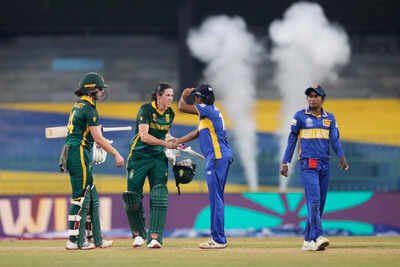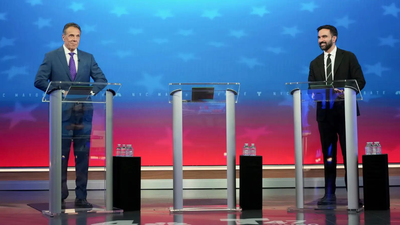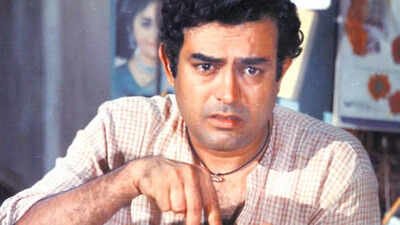
US courts will decide whether the case against Indian-origin foreign policy expert and US govt adviser Ashley Tellis will stand. He’s accused of habouring top-secret US govt documents at his home and meeting Chinese govt officials to whom he could have passed on some of this information. Tellis has challenged the charges against him.
The broader point, though, is that this is one of those stories that put the focus on counterintelligence as a critical pillar of national security, particularly in these times.
Counterintelligence isn’t a new concept. The idea dates back to ancient Egypt, Mesopotamia and China where rulers maintained secret networks to detect foreign espionage. In medieval England, Francis Walsingham was credited with building one of the first organised intelligence networks in Europe and uncovering Catholic plots against the English monarchy. But it was during the two World Wars that counterintelligence started acquiring its modern structure with dedicated units like Britain’s MI5, US’s FBI and the Soviet Cheka – later NKVD/KGB.
Today, thanks to a digitally interconnected world, the counterintelligence portfolio has vastly expanded – from tracking internal threats and thwarting industrial espionage to countering cyber attacks and misinformation.
The world of double cross: One of the most successful counterintelligence operations of the 20th century was the British Word War II Double-Cross System – aka XX System – that intercepted Nazi spies and turned them against the German regime. The method was successfully deployed by MI5 to spread disinformation within German ranks. Its most notable success came during the Normandy Landings in the form of Operation Fortitude – a plan that successfully deceived the Germans into believing that the Allied landing site would be Calais. Therefore, when Normandy happened, German forces were divided, contributing to Allied victory.
Cambridge five: But the Brits would get a taste of their own medicine with the Cambridge Five spy ring. Five individuals were recruited by the Soviet NKVD during their time at Cambridge University in the 1930s. All five would go on to pursue important careers in British Intelligence. They passed on hundreds of top secret documents to their Soviet handlers. Three of the five fled to the Soviet Union and none of them was ever prosecuted.
Those planes hitting Twin Towers: Across the Atlantic, US has had its share of counterintelligence failures. Aldrich Ames was a senior CIA officer who was turned by Soviet KGB in the 1970s. Ames would pass on classified information on CIA and FBI sources in USSR, leading to the deaths of at least 10 such assets. He was finally arrested in 1994 and was sentenced to life in prison.
But the biggest US counterintelligence failure is certainly 9/11. The US intelligence community failed to pick up tell-tale signs that the biggest terror attack on American soil was underway due to poor intra-agency communication between FBI and CIA. This led to an underestimation of the threat posed to US by Khalid Sheikh Mohammed, a trusted aid of Osama bin Laden. Mohammed was also a key planner behind the 1993 World Trade Centre bombing, which should have made the US intelligence community take him more seriously. Yet, lack of sufficient interagency coordination saw key pieces of intel fall through the gaps, leading to the most catastrophic terror attack in America and launching the world-changing war on terror.
The Indian experience: India too has been a victim of Pakistan-sponsored terrorist attacks. The most notable of such attacks that Indian counterintelligence failed to prevent was the 26/11 Mumbai terror strike in 2008. Back then Indian counterintelligence was found to suffer from multiple gaps including lack of actionable intel and poor interagency coordination. India would go on to rectify these through the creation of bodies like National Investigation Agency. However, there have been successes too like R&AW’s Operation Hornet in Paris and London to neutralise UK-based Pakistani national Abdul Khan, who was sheltering extremists and planning attacks in India with the help of ISI and renegade Indian businessmen. The operation is considered one of the best executed Indian counterintelligence missions ever.
From humint to sigint: But as communication systems evolved, counterintelligence focus slowly started shifting from human intelligence or humint to signals intelligence or sigint. This, again, could be both defensive and offensive in nature with cyberoperations now becoming a serious domain of counterintelligence work. Think Operation Olympic Games (2006-2010) that successfully sabotaged Iran’s nuclear programme through the development of the Stuxnet computer worm. It could also be low-key like Estonia’s Bronze Night riots in 2007 that were seen to be the fallout of Russia’s first modern disinformation campaign in a neighbouring country involving the bronze statue of a Soviet soldier.
The point is cyber tools have enabled attackers to not just remotely attack critical infra – power grids, nuclear facilities, airport landing systems – but also manipulate public opinion, incite riots and even try and topple foreign govts.
The China threat: The biggest counterintelligence challenge today comes from China. And this where the Tellis case has salience. According to Michael Casey, former director of the US National Counterintelligence and Security Center, Beijing has the idea that if it can supplant US and key American technology, both military and non-military, it can become the pre-eminent player in the international arena. This perfectly fits with China’s United Front strategy. United Front Work Department (UFWD) of the Chinese Communist Party central committee helps amplify China’s talking points in foreign countries, suppresses critics, and recruits individuals connected to key state assets and technologies.
This all-of-govt Chinese approach means Beijing is able to weaponise almost anything, from public data to business connections and trade, making counterintelligence in open democratic societies even more challenging.
Disclaimer
Views expressed above are the author’s own.
END OF ARTICLE





